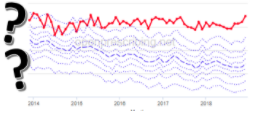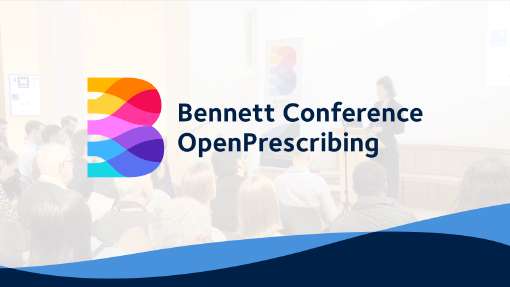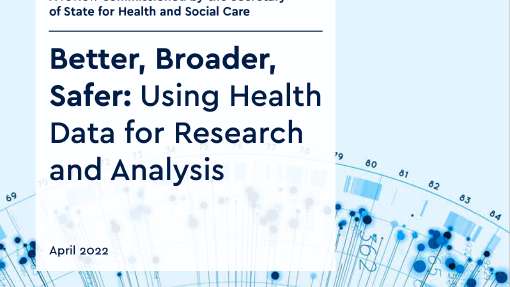OpenPrescribing February 2019 newsletter
-
Posted:
- Categories:

New Price Concessions alerts
We have introduced a new email alert service, built upon our recently-launched NHS Price Concession calculator, which shows the cost impact of concessions for every single practice, CCG and for all of England combined.
If you sign up for these new alerts, an email will pop into your inbox soon after a new price concession is announced (approximately once per week) to update you on the impact these costs are predicted to have on your practice/CCG. Read more in our blog, or sign up by going to the price concessions tool from your practice or CCG dashboard.

New Guide: How-to… Find Cost Saving Opportunities
We have created a how-to guide, including some new video demos, showing you step-by-step how to identify a range of different cost savings opportunities for your CCG on OpenPrescribing.net. You may particularly find this useful when forming your local QIPP plan, and it can also be used for individual practices.
Savings opportunities you can find on OpenPrescribing fall into the following categories (click each link to go to the relevant section of the how-to guide):
- Price-per-unit (includes video)
- Low-priority items
- Selecting “cost-saving” from our standard measures (includes video)
- Ghost-branded generics
- “Custom” savings
Check out our blog for more information.
Call for new measures!
We have joined forces with some of the Chief Pharmaceutical Officer’s Clinical Fellows to collect and assess your ideas for new measures.
We’ll shortlist any measures which we can build within our dataset that we think will be widely useful, and add as many to the site as possible. You can submit ideas via this simple form, or check out our blog for more information.

Ghost-branded Generics Update
Having found that ghost-branded generics were more likely to be prescribed in practices using SystmOne, we talked to the makers of SystmOne (TPP) and as a result of our work they very quickly made some changes to help the NHS avoid these extra expenses.
If you’re a SystmOne practice, you should find that these new features are now available, including being able to identify affected prescriptions. Read more in our blog.
Feature update: Measures all break down into individual presentations
For a while now, for most OpenPrescribing measures you have been able to see the individual drug presentations contributing to the measure value for your practice or CCG. For measures with a more complex construction, however, this has taken a little longer: but we are pleased to say you can now break all measures down into individual presentations (e.g. benzodiazepines).

There are two measures where this can’t be done directly and you currently need to take an extra step:
- the combined low-priority spend — analysing the huge number of BNF codes in this measure could make for a very slow query. Instead, you can break it down into its constituent measures which can then be broken down to their individual presentations.
- ghost-branded generics — you can find the individual presentations affected by ghost-branded prescribing listed separately (find this from your practice/CCG dashboard — direct linkage coming soon).
Feature Update: Totals on Analyse Page
We often get requests for data to be summed in various ways from our Analyse tool. Based on this feedback we have tweaked our analyse page so that, below the chart, it now gives you the total for your selected numerator across all of the selected organisations, both for the financial YTD and the latest 12 months.

Tips:
- to get the totals across the whole of England simply select no practices or CCGs.
- if you want to see the data in a different way simply download to a spreadsheet and rearrange as needed.
- if there are more features you would find useful, as always do let us know (feedback@openprescribing.net).
In case you missed it…
- Time-travelling Drug Tariff: we recently found that the price paid for a drug isn’t always the one listed in the tariff. Instead, sometimes the price is based on the drug tariff price…from the future. Or to be more precise, one month into the future. Read more here.
- Antibiotics CMO paper: We checked to see if there was any change in total antibiotic prescribing in England in response to the CMO’s extensive antimicrobial stewardship measures introduced in 2013. We were delighted to report a substantial shift in practice, starting in 2013, estimating 9.7 million fewer prescriptions. Read the paper here.
Prescribing data update!
We’ve updated OpenPrescribing with December’s data. Head over to openprescribing.net to explore.
In other news…
- COMPare papers published: The results of clinical trials are used to make treatment decisions and guidelines. It is therefore important that they are reported accurately, avoiding any bias.
- Switching outcomes is one major source of bias. This is because if researchers measure lots of things, some are likely to give a positive result by random chance (a false positive). A pre-specified outcome is much less likely to give a false-positive result.
We checked clinical trials in the world’s biggest medical journals, and found a huge amount of outcome switching (see below).

So, we sent correction letters on all of these misreported trials, to see how the editors — and the triallists — would react.
What happened next? Read our results papers here and here, or find out more about the project on our COMPare trials website.
Sign up
To get these newsletters in your inbox, sign up on the OpenPrescribing home page, openprescribing.net.



















